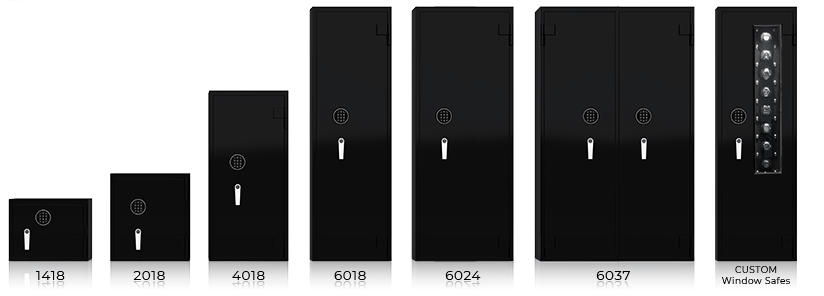The Single Strategy To Use For Perth Safe Company
Table of ContentsHome Office Safes Can Be Fun For EveryoneWhat Does Home Office Safes Mean?Getting My Deposit Boxes To Work
-675x675.png)
The is a framework for helping make decisions about making effective use of information which is personal or sensitive. It is generally used to describe or create research access to statistical data held by government firms, and by information archives such as the UK Data Service. 2 of the Five Safes refer to analytical disclosure control, therefore the Five Safes is generally utilized to contrast statistical and non-statistical controls when comparing data management alternatives.
The mix of the controls causes 'safe use'. These are most commonly revealed as questions, for instance: Safe jobs Is this use of the data suitable? Safe people Can the users be depended use it in an appropriate way? Safe settings Does the gain access to facility limitation unauthorised use? Safe data Exists a disclosure danger in the information itself? Safe outputs Are the statistical outcomes non-disclosive? These measurements are scales, not limitations.
For instance, a public use file readily available for open download can not control who uses it, where or for what purpose, and so all the control (defense) need to remain in the data itself. In contrast, a file which is only accessed through a secure environment with certified users can contain really delicate information: the non-statistical controls allow the data to be 'risky'.
There is no 'order' to the Five Safes, because one is always more crucial than the others. However, Ritchie argued that the 'supervisory' controls (tasks, people, setting) must be dealt with prior to the 'statistical' controls (data, output). cash tins perth. The 5 Safes concept is related to other subjects which established from the exact same program at ONS, although these are not always executed.
-675x675.png)
9 Easy Facts About Drug Safes Shown
This discussion follows the idea of 'data as a safe drug detox recurring', along with data defense laws of the time which often characterised data just as confidential or not confidential. A comparable idea had already been established individually in 2001 by Chuck Humphrey of the Canadian RDC network, the 'continuum of access'.
The 5 Safes was developed in the winter of 2002/2003 by Felix Ritchie at the UK Office for National Statistics (ONS) to describe its safe remote-access Virtual Microdata Lab (VML). It was described at this time as the 'VML Security Design'. This was adopted by the NORC data enclave, and more widely in the US, as the 'portfolio model' (although this is now also used to refer to a somewhat various legal/statistical/educational breakdown). deposit boxes.
The original structure only had four safes (tasks, people, settings and outputs): the framework was utilized to describe extremely detailed information access through a protected environment, and so the 'data' measurement was irrelevant. From 2007 onwards, 'safe information' was consisted of as the structure was utilized to a describe a larger series of ONS activities.
Some discussions, such as the OECD, utilize the term 'secure' rather 'safe'. Nevertheless, the use of both these terms can cause presentational issues: less control in a particular measurement might be seen to imply 'risky users' or 'insecure settings', for instance, which distracts from the primary message. Hence, the Australian government utilizes the term "5 data sharing principles".
There is no reference to the Five Safes or any associated literature. The Australian variation was required to include references to the 5 Safes, and presented it as an alternative without remark. The framework has actually had three usages: pedagogical, detailed, and design. The latter is a reasonably recent development. The very first substantial use of the structure, besides check here internal administrative use, was to structure researcher training courses at the UK Office for National Data from 2003.

The smart Trick of Drug Safes That Nobody is Talking About
Eurostat in 2011). An early use was to help recognize areas where ONS' still had 'irreducible dangers' in its provision of protected remote gain access to. The structure is mostly utilized for personal social science information. To date it appears to have made little effect on medical research planning, although it is now included in the modified guidelines on executing HIPAA guidelines in the United States, and by Cancer Research Study UK and the Health Structure in the UK.
In general the Five Safes has been used to describe options post-factum, and to explain/justify options made, however an increasing variety of organisations have actually used the structure to create information gain access to services. For example, the Hellenic Statistical Company established an information method constructed around the 5 Safes in 2016; the UK Health Foundation utilized the Five Safes to create its data management and training programs.
The significant style usage is in Australia: both the Australian Bureau of Statistics and the Australian Department of Social Service utilized the Five Safes as an ex ante style tool. In 2017 the Australian Efficiency Commission recommended embracing a variation of the framework to support cross-government information sharing and re-use.